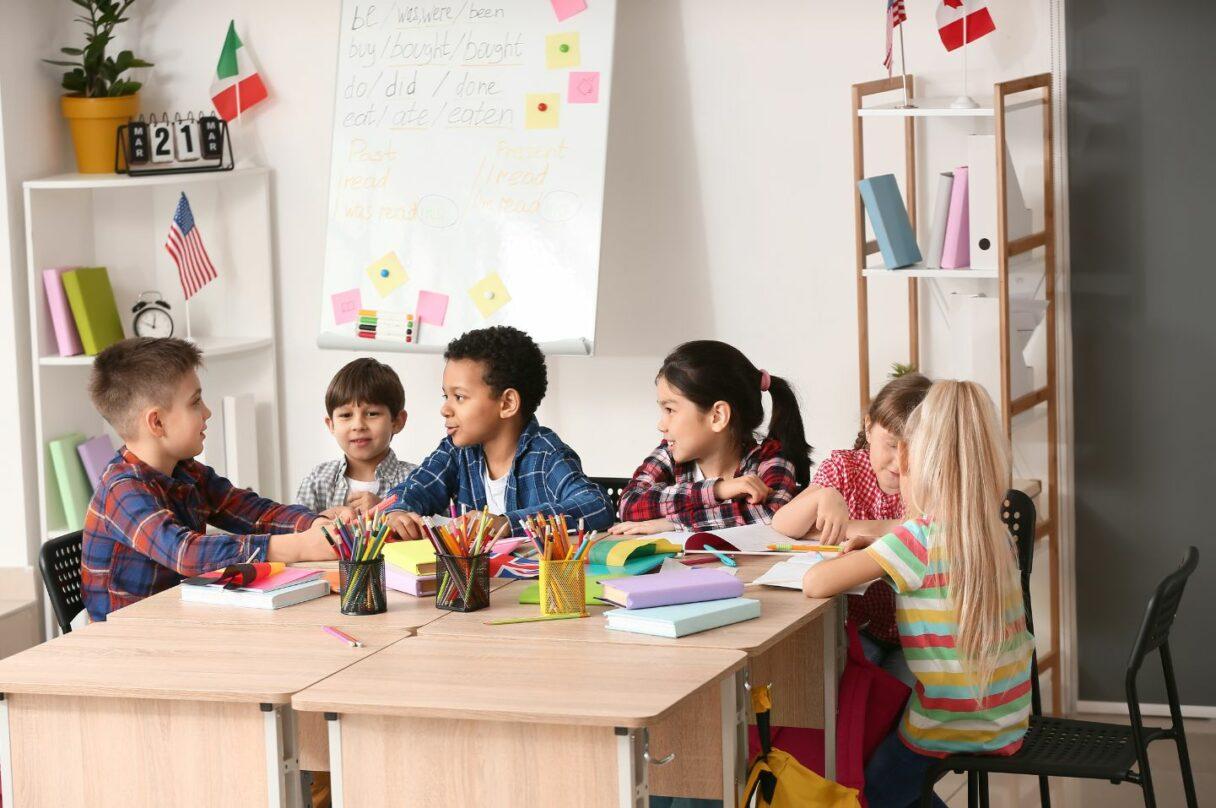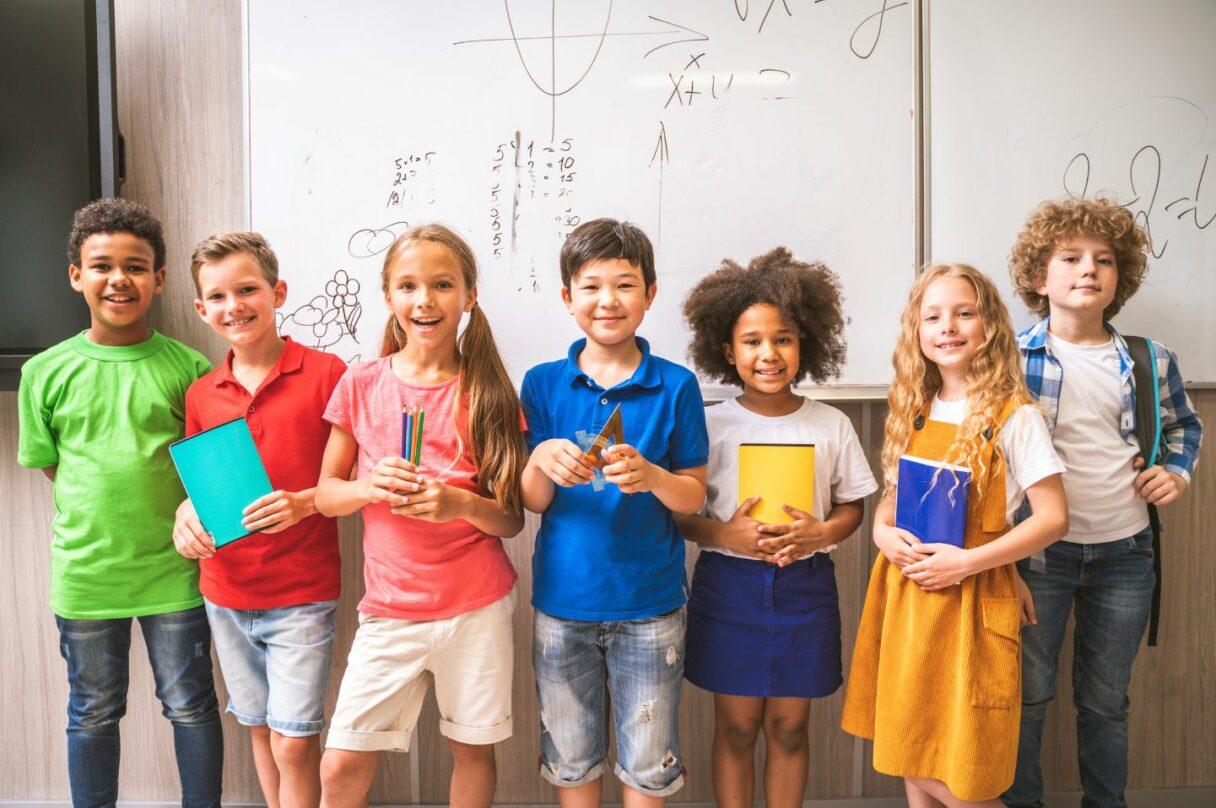
What is a task and what is the best way to define and describe Task-Based Learning?
Do you think that incorporating meaningful tasks is a good way to motivate your learners?
Written by Sheila Corwin

Teacher Trainer in Florence
Task-Based Learning (TBL) is all about your students creating, producing, or designing something in class… it could be anything… anything at all. TBL includes the 21st Century skills of Communication, Collaboration, Creativity, and Critical Thinking (4C’s) and can also be described as a short interactive assignment that results in a finished product.
The Task part of Task-Based Learning has been (more or less) defined by linguistic scholars as:
In 2007, Jane Willis and her husband Dave Willis came up with the following criteria in their book Doing Task-Based Teaching (pp. 12-14) which can be used to discern a task:
If your answer is yes to all the questions, you can be sure that the classroom activity you have in mind is task-like.

TBL is an approach to teaching that was originally used by second or foreign-language teachers. It is an approach that stems from Communicative Language Teaching (CLT) – a language teacher methodology – which emerged in the 1970s.
Language teachers originally adopted Task-Based Learning for a variety of reasons with the most important being the desire to make their classrooms more student-centered, communicative, and collaborative by incorporating more interactive tasks.
Task-Based Learning (TBL) is also known as Task-Based Language Teaching (TBLT) and Task-Based Instruction (TBI). Its principal focus is on the completion of meaningful tasks. Such tasks can include creating a poster, producing a newsletter, video, or pamphlet, or designing a map of the school or neighborhood.
The TBL formula includes the following stages:
The teacher introduces the topic and gives students clear instructions and guidelines on what they will be doing during the three-part task cycle (below). This phase will give students a clear understanding of what will be expected of them and include any important knowledge or details they need to know.
This is also a good time to lead into the task by brainstorming or asking questions about the topic. Teachers can also get students ready for the task by presenting an example of the task or introducing a picture, audio, or video which will be useful in completing the task.
Students get ready to do the task. Students are given what they need to complete the task (handouts and written instructions) and are assigned to work in pairs or small groups while the teacher monitors and offers encouragement when necessary. The teacher’s role is typically limited to one of a coach, guide, and facilitator.
Students work on the task in pairs or small groups and prepare to report or present their results or product. They make important decisions about their presentation and assign each person in the group with a part of the task to present, so everyone takes responsibility during the report stage. The group rehearses its presentation. The teacher walks around, helps if needed, and takes notes on anything that needs to be addressed after the presentations.
Students present their findings to the class in the form of a presentation. The rest of the class listens to the reports and writes down feedback which will be given to the presenters after all reports have been heard. The class can also ask questions or provide some quick oral feedback after each presentation. The teacher also gives feedback on the content as well. Students vote on the best presentation, report, or product.
After presenting their completed task, others in the class can offer constructive feedback.
Several ways to do so include:

Here is a template for creating your own Task-Based Learning lesson or activity:
There are many different TBL interpretations so don’t hesitate to make it your own.
Jane Willis (1996) came up with A Framework for Task-Based Learning that includes coming up with tasks that revolve around a certain topic. This can be very useful for teachers looking for task ideas to engage their students during a lesson.
See the example to follow:
Topic: Travel

Task-Based Learning has many interpretations and you, the teacher, can adapt and make anything your own. Although TBL was originally developed with language teachers in mind, the core of every Task-Based Learning lesson, as the name suggests, is the task.
A Task-Based approach offers an alternative for teachers who are interested in creating a more student-centered environment in their classroom. In a task-based class, the lesson is based on the completion of a central task and its presentation.
TBL incorporates all 4C’s and is a great way to get students used to working on Project Based Learning (PBL) because it includes many of the same skills but, in a smaller, more digestible way.
Whereas PBL requires working on a project for an extended period, TBL can be done in one or two lessons and can be a good starting point for teaching students how to communicate, collaborate and work on presentations with others.
Resources
We will send you, on average, one newsletter per week: just enter your name and email…and you’re in!
What is our newsletter about?
Through the newsletter, we will send you regular news updates and items, about the resources – digital and otherwise – that we will make available on our site and our social networks.
You will receive all the updates you need if you are a project writer and you don’t want to miss all the news about the 2021-27 Erasmus programme.
We will also contact you when we will add new courses to our selection, which already represent the largest selection of Erasmus Plus KA1 courses available!
We will write to you when we will publish new articles on our blog; articles that might help you in your class, interviews with our teachers, experiences here at Europass Teacher Academy, and more!
Hello,
I do not use project-based learning techniques with my lessons. However, I have successfully used other methods and techniques.
Sheila Corwin says:
Hi Mehmet, TBL or Task Based Learning is a very small PBL and can be a good place to start for teachers who are interested in incorporating more communication, collaboration, creativity, and collaboration between students in their classrooms.
Published on 28 November 2022 at 16:36 Mehmet UŞAR says:Yes, I think that collaborative method and game-based learning develop students’ creativity. Of course, we can say that these also contribute to many more mental development of children.
Published on 30 November 2022 at 18:27 Chantal Guihard says:Thanks to Sheila i met in’Florence in January 2018, I use Willis´s model to set up TBL in class…it does work very well. Now I am a teacher trainer and I teach them how to set up this pedagogical method in class.
Published on 15 November 2022 at 10:08ReplySheila Corwin says:
So glad you’ve found this approach useful to you in both your own classroom and in your training of other teachers. By the way, I have very fond memories of you in my teacher training classroom, Chantal. =)
Published on 30 November 2022 at 16:00 Samar Mustafa says: I find it more helpful for teachers and useful to students Published on 4 July 2024 at 19:29ReplySheila says:
It’s great to have formulas. Published on 5 July 2024 at 13:54